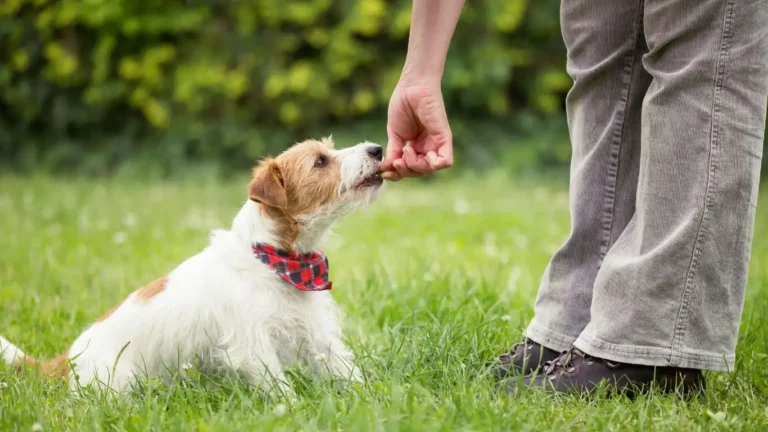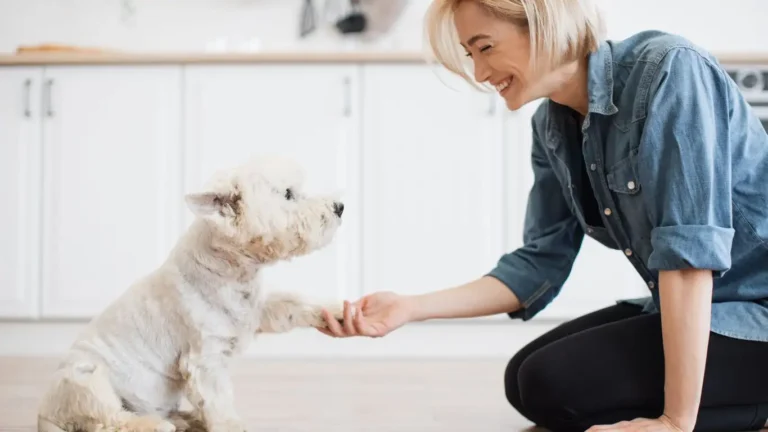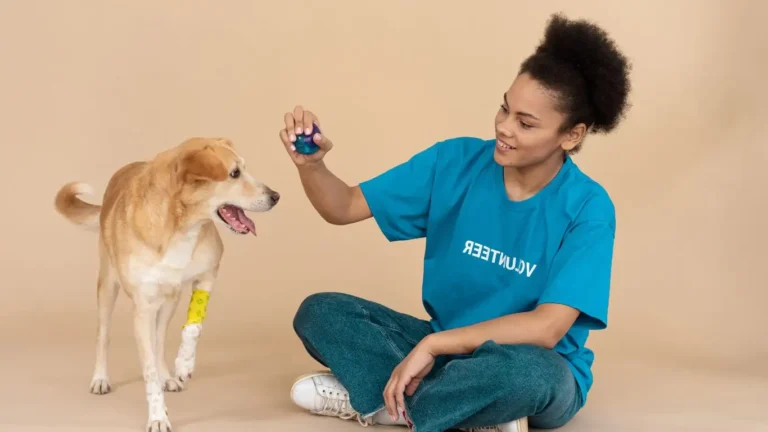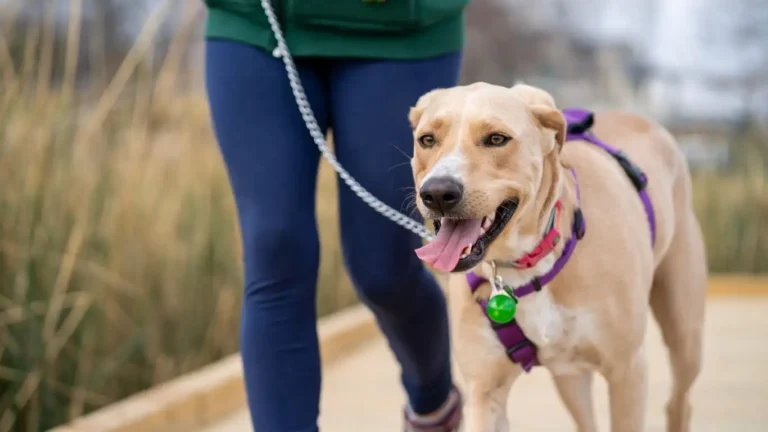How to Train a Dog to Walk Through a Crowd Calmly and Confidently
Training a dog to navigate through a crowd calmly isn’t just a skill—it’s a life-changing experience for both you and your dog. As a Certified Professional Dog Trainer (CPDT-KA), I’ve had the pleasure of helping countless dog owners teach their pups the art of walking through crowded spaces without anxiety or reactive behaviors. Whether you’re walking through a busy park, strolling down a bustling city street, or attending a dog-friendly event, being able to walk your dog confidently through crowds is a valuable skill for both of you.
Many dog owners face challenges when it comes to their dog’s behavior in crowded areas. It’s not uncommon for dogs to become overwhelmed, tugging on the leash, barking, or trying to pull away from the crowd. In my experience, the good news is that with the right approach and consistent training, it’s entirely possible to teach your dog how to stay calm and composed no matter how chaotic the environment might get.
In this guide, we’ll break down the process of how to train a dog to walk through a crowd calmly, focusing on clear steps, practical tips, and using positive reinforcement. Let’s dive in and get started!
Understanding Your Dog’s Anxiety in Crowds
Before we get into the training techniques, it’s important to understand why your dog might be reacting to crowds in the first place. Dogs, like us, have their own unique personalities, but most will feel some level of anxiety when faced with large groups of people or unfamiliar surroundings. This is especially true for dogs that haven’t been exposed to crowds or have had negative experiences in these settings.
Dogs that are fearful or overwhelmed by crowds may exhibit behaviors like:
- Pulling on the leash to get away
- Barking or whining in response to the noise or activity
- Freezing or trying to hide
- Becoming aggressive or reactive when someone approaches
It’s important to remember that these behaviors are usually not a sign of stubbornness, but rather a reflection of your dog’s natural instincts and emotional state. A calm, steady approach to training will help your dog feel more secure in these situations.
Desensitization: Slowly Introducing Your Dog to Crowds
The first step in training your dog to walk through a crowd calmly is desensitization. This is a process of gradually exposing your dog to crowds in a controlled, low-stress environment before increasing the intensity of the situation.
Start with quieter environments: Begin in a calm, relatively quiet location with a few people around. This could be a park, a small outdoor event, or even your own backyard. The goal is to expose your dog to the presence of other people without overwhelming them.
Use positive reinforcement: Every time your dog remains calm in the presence of others, reward them with a treat or praise. Positive reinforcement is the key to building new, calm associations with crowds. I often use high-value treats (something your dog really loves) to keep them motivated and focused during these early training sessions.
Increase the intensity gradually: Once your dog is comfortable in a smaller crowd, start increasing the number of people and the level of distractions. You might move to a busier part of the park or a more crowded area in your neighborhood. Continue rewarding your dog for calm behavior, and remember that desensitization is a process. It may take time for your dog to adjust to larger crowds, but consistency is key.
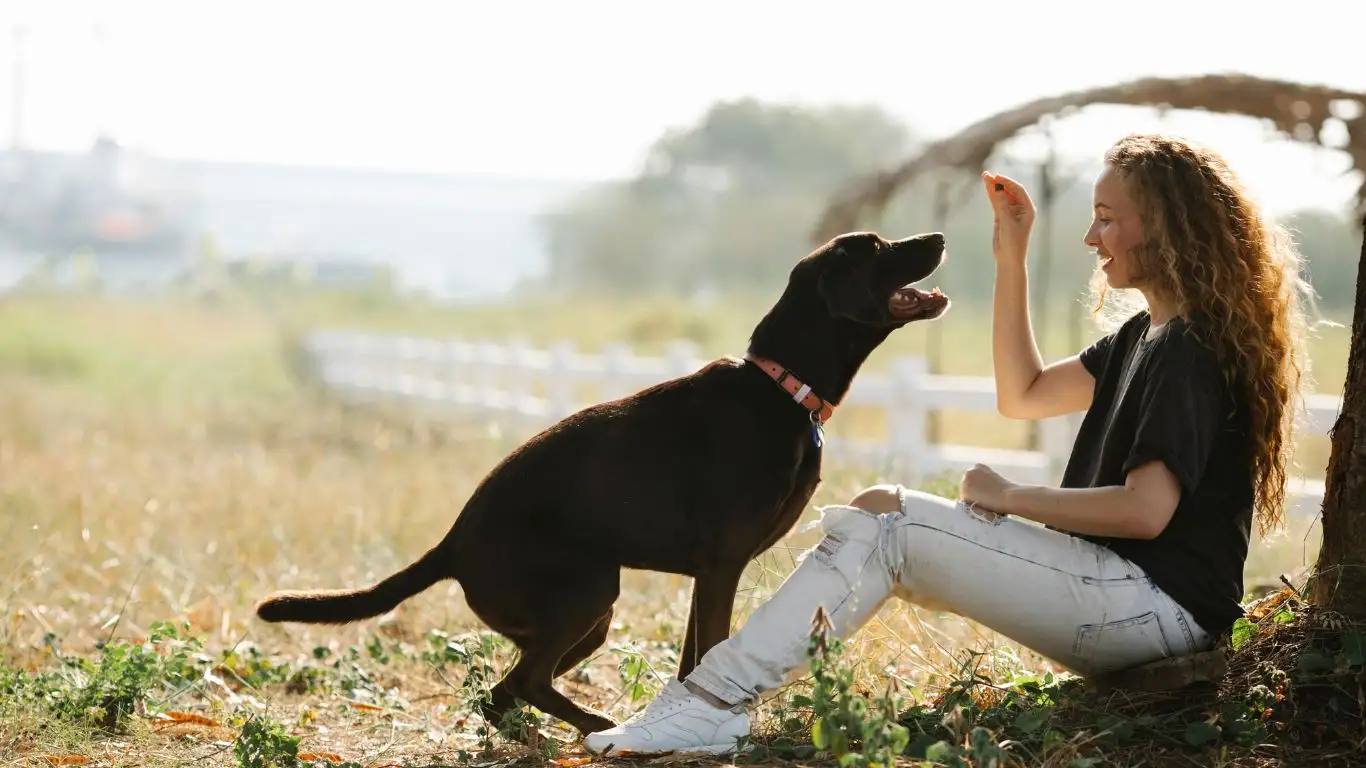
Teaching Basic Leash Skills for Better Control
Before you can expect your dog to walk calmly through a crowd, they need to master some basic leash skills. A dog that pulls, tugs, or lunges on the leash can quickly get overwhelmed in a crowd. Having a dog that listens to basic commands like “heel,” “sit,” or “stay” will give you more control, making it easier to navigate through a busy area without stress.
Mastering the Heel Command
The “heel” command is one of the most important skills to teach your dog when learning how to walk through a crowd calmly. When your dog is in the “heel” position, they are walking right beside you, not pulling ahead or lagging behind. It’s a great way to keep your dog close and focused on you.
To teach your dog to heel:
- Start by standing still and holding a treat near your dog’s nose.
- As your dog moves toward the treat, say the command “heel” in a calm, firm voice.
- As your dog moves into the desired position (right beside you), reward them with the treat.
- Gradually increase the amount of time you require them to stay in the heel position before giving the treat.
Remember, the key is consistency. Practice in low-distraction areas first, then move to more challenging environments as your dog becomes proficient in the skill.

Stay Calm and Keep Your Energy Positive
Your dog is always picking up on your energy. If you’re tense or anxious while walking through a crowd, your dog will likely mirror those emotions. It’s essential to remain calm and confident, even if things start to get a little chaotic. Keep a positive, steady energy and use a calm, soothing voice to reassure your dog.
Dogs thrive on routine, structure, and predictability. If they sense that you are unsure or stressed, it can lead to anxiety and confusion for your dog. So, if you’re feeling anxious or uneasy, take a deep breath, reset, and approach the situation with confidence.

Using Distractions to Strengthen Training
Now that you’ve worked on basic leash skills and started desensitizing your dog to crowds, it’s time to introduce more distractions into your training. Walking through a crowd isn’t just about being around people—it’s about managing all the other noises, movements, and visual stimuli that come with busy environments. The more distractions your dog can successfully handle, the more confident and calm they’ll be when walking through crowded areas.
I’ve found that adding distractions into your training is one of the most effective ways to improve your dog’s behavior in public. It’s a bit like exposing them to “mini crowd situations” that you can control. The goal is to make distractions less intimidating, so your dog doesn’t get overstimulated or react in a negative way.
Start with Low-Intensity Distractions
Don’t dive straight into a bustling downtown street or a crowded market just yet. Start small and build your way up. When I work with clients, we typically start by adding some basic distractions during training walks, like:
- Other dogs walking nearby
- Children playing or riding bikes
- Joggers passing by
- Cars driving past or bikes riding by
The key is to keep things manageable at first. You want your dog to remain calm, so don’t overwhelm them right away. Start in quieter areas, like a neighborhood park or a less busy street. Keep your dog’s attention on you and reward them whenever they stay calm while these distractions are happening.
The first few times you add distractions, you may notice your dog’s attention drifting. Don’t worry—it’s normal. Gently guide their focus back to you using treats or praise, and keep practicing.
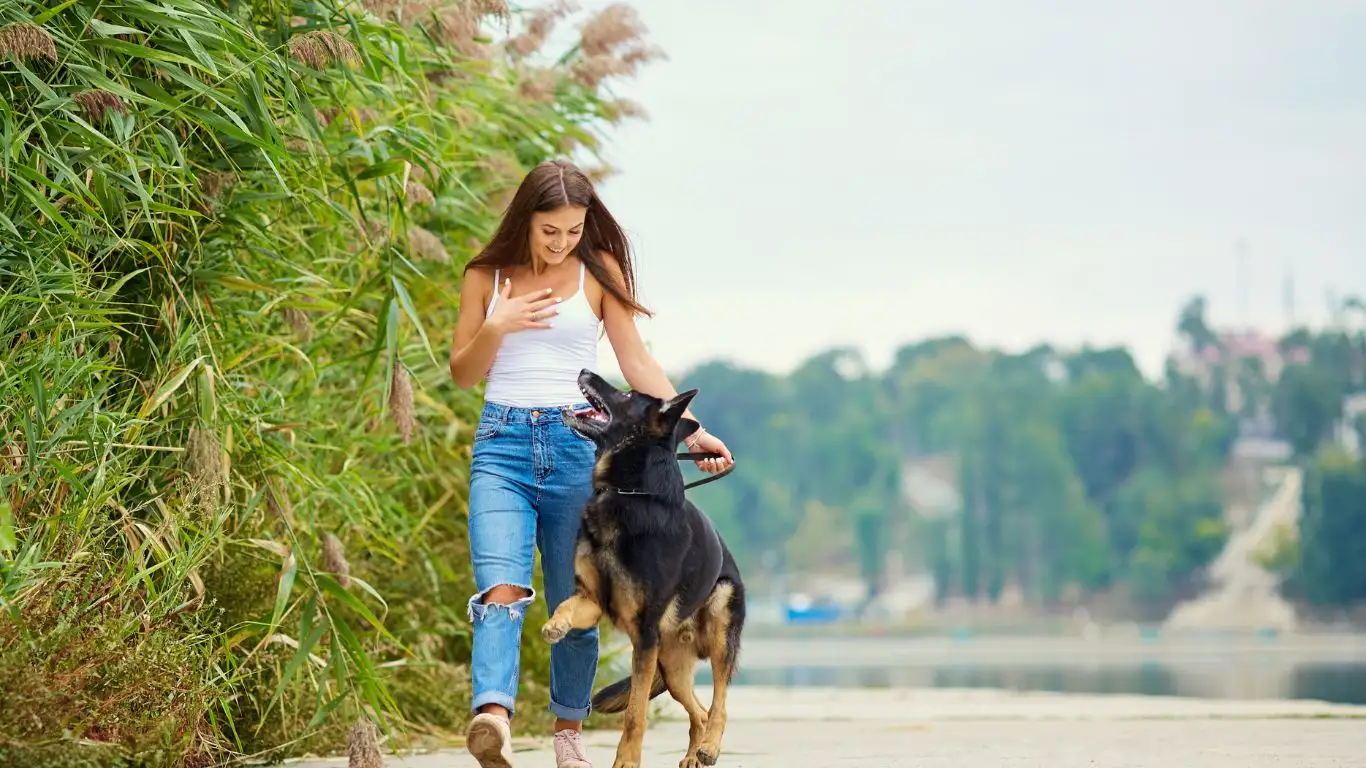
Gradually Increase the Intensity of Distractions
Once your dog is responding well to smaller distractions, it’s time to up the ante. This is where you’ll start walking through areas with more noise, movement, and people. Again, you want to do this gradually—don’t rush it! With each step, make sure to reward your dog for staying calm and focused.
Here’s an example of how you might scale up the distractions:
- Start with quieter areas where there are a few people walking by.
- Then move to busier areas with more pedestrians and cyclists, but not yet large crowds.
- Next, try walking through a busy dog park or a farmers’ market, where there are lots of different sights and sounds.
Throughout each of these stages, keep practicing your leash skills. Have your dog stay in a heel position, or give them a “sit” command when you’re waiting in a busy area. By offering them clear guidance in increasingly distracting environments, you’re helping them build confidence.
Teaching Your Dog to Focus on You in Crowded Areas
One of the most important things to teach your dog while training them to walk through a crowd calmly is focus. A dog that can keep their attention on you, even when there’s chaos around, will be much easier to manage in crowded spaces.
As a professional dog trainer, I always emphasize the power of the “look” command. This simple behavior can make a huge difference, especially when things start getting loud or overwhelming. When you can get your dog to focus on you, they’ll be less likely to react to the distractions around them.
The “Look” Command: A Game Changer
Teaching your dog the “look” command is simple, but it’s incredibly effective. It essentially asks your dog to make eye contact with you, which draws their attention away from any distractions.
Here’s how to teach the “look” command:
- Hold a treat in front of your dog’s nose, then slowly move the treat up toward your face.
- As soon as your dog looks up at your face, say the word “look” and reward them with the treat.
- Repeat this several times, then start practicing in environments with more distractions.
- Gradually phase out the treats and rely more on verbal praise.
Once your dog is proficient at looking at you on cue, you can use this command when you need them to focus on you in a crowd. I use this all the time during real-world training, whether it’s walking through a busy market or passing by an ice cream truck that’s tempting my dog’s attention!
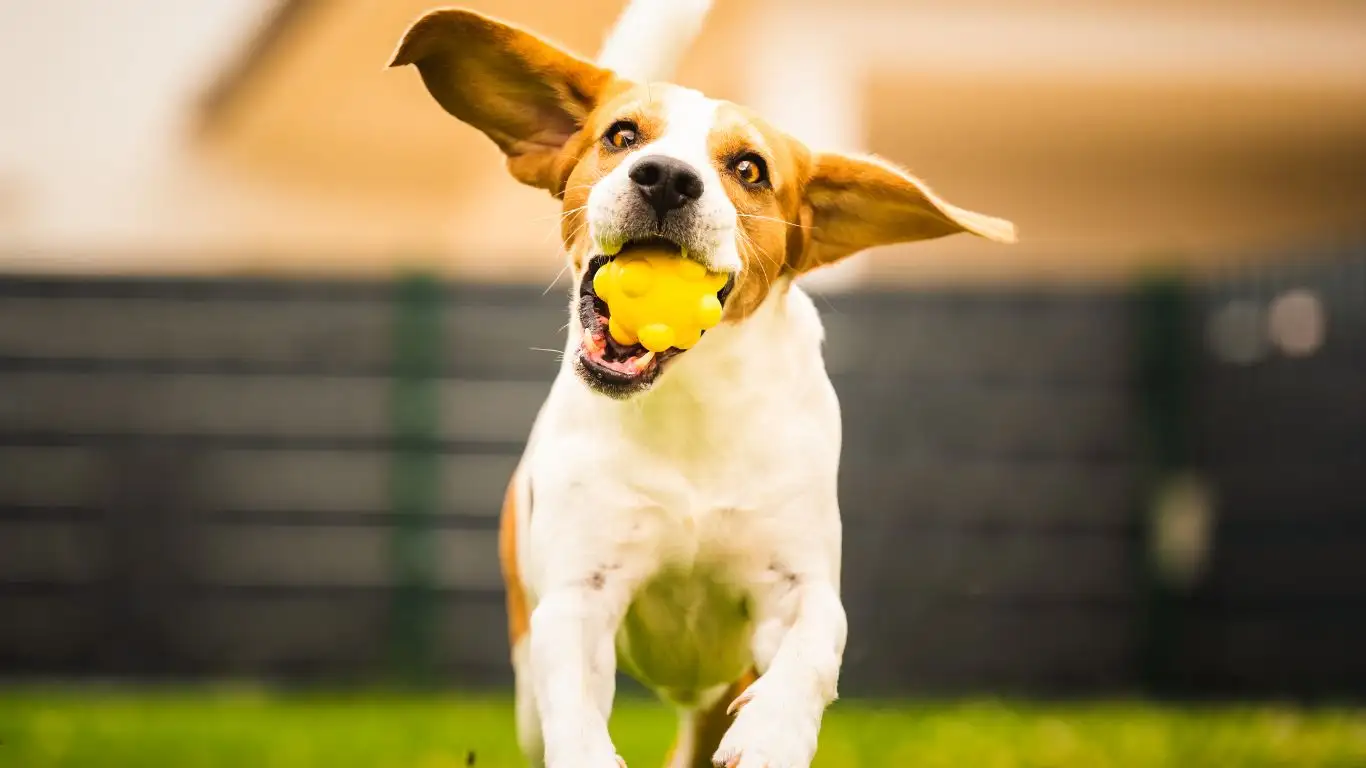
Use Positive Reinforcement to Reinforce Calm Behavior
As you continue training your dog to focus on you in crowded spaces, remember that positive reinforcement is key. Praise, treats, and even a little playtime go a long way in motivating your dog to stay calm. I can’t stress enough how important it is to reward your dog for calm behavior, especially when they’re under stress or surrounded by distractions.
In my experience, dogs respond best when the rewards are timely and consistent. For example, if your dog remains calm as you walk past a group of people or another dog, reward them immediately. This helps your dog make the connection between their calm behavior and the positive outcome they get from it.
Just like with leash skills and desensitization, patience is essential. If your dog is struggling to focus, take a step back and work on easier distractions before progressing. Training is a marathon, not a sprint!
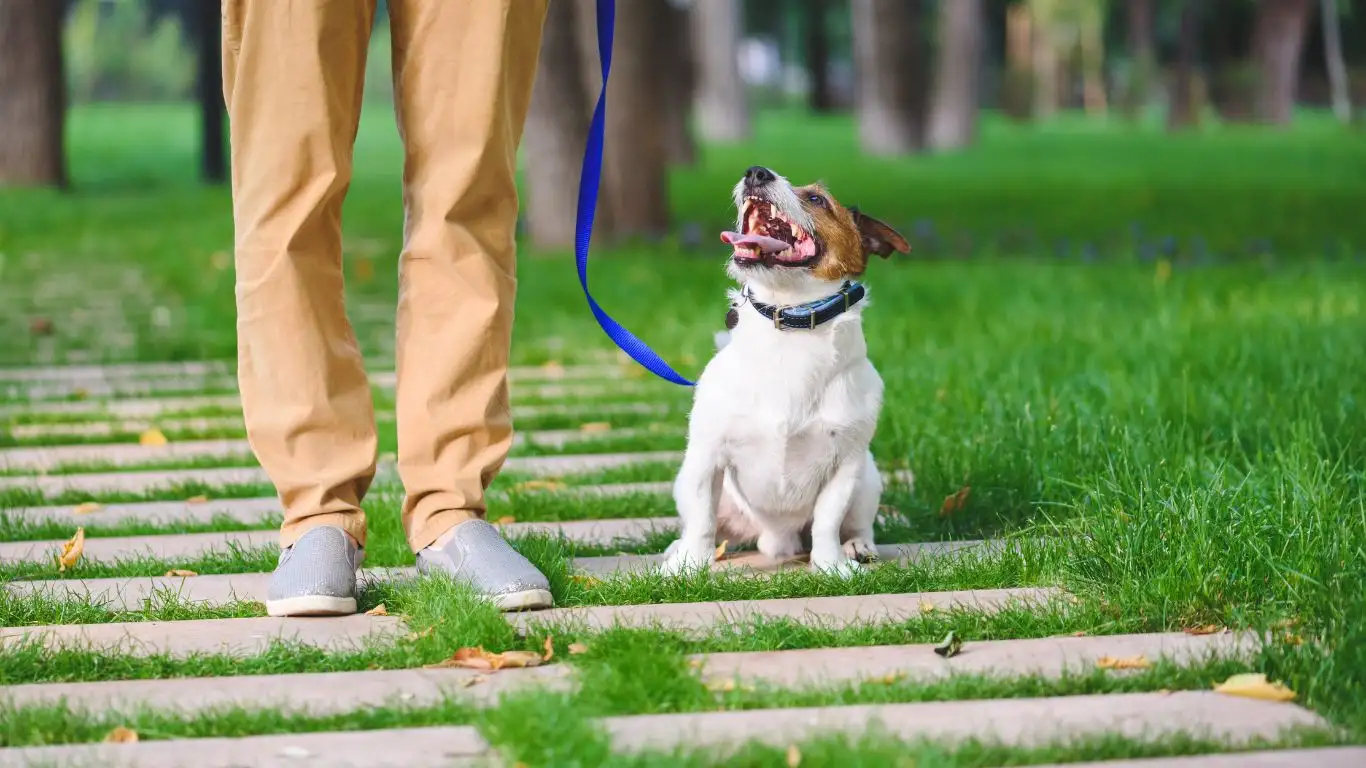
Handling Unpredictable Situations in Crowds
Even the most well-trained dogs can face unexpected situations in crowds, like someone running past, a sudden loud noise, or an unexpected dog approaching. In these cases, it’s essential to stay calm and composed. If your dog gets startled or reacts, it’s an opportunity to guide them back to a calm state rather than punishing them for reacting. The goal is to reinforce calmness and trust during these moments.
In my experience, the key to handling unpredictable situations is preparation. The more prepared your dog is for different scenarios, the less likely they are to react negatively. Here’s what I recommend:
- Always be ready to redirect your dog’s attention with a command or treat if something catches them off guard.
- Stay calm and be mindful of your body language—your dog picks up on your energy.
- If your dog reacts in a way you don’t want, don’t punish them. Instead, reset by taking a few steps back and calmly guiding them back to a calm state.
Over time, your dog will learn that crowds don’t have to be scary or overwhelming. With consistent practice, they’ll be able to walk through any crowd with ease and confidence.
Case Studies & Real-Life Examples
It’s one thing to talk about theory and techniques, but seeing real-life examples of how these strategies work is another! Over the years, I’ve worked with many clients who had dogs struggling with crowd-related anxiety, and I want to share a couple of case studies that really highlight how effective these methods can be.
Case Study 1: Bella, the Nervous Border Collie
Bella, a 3-year-old Border Collie, was terrified of crowds. She would freeze and shake when we tried to walk through busy parks, and she even started to lunge at people out of fear. Her owner, Emily, came to me looking for a solution because Bella was becoming more and more anxious every time they ventured out.
We started with basic desensitization, taking short trips to quieter areas where there were just a few people. I encouraged Emily to reward Bella every time she looked calm, and we worked on her “heel” command to keep her close. As we gradually increased the intensity of distractions, Bella started making progress. The real breakthrough came when Emily began using the “look” command. Bella became more focused on Emily and less on the distractions around her.
After a few months of consistent training, Bella was confidently walking through crowded parks, even around children and other dogs, without showing signs of anxiety. Emily was thrilled to see such a huge transformation, and Bella was happier too. It’s a perfect example of how slow, methodical exposure and positive reinforcement can help even the most anxious dogs thrive in crowded environments.
Case Study 2: Max, the Overexcited Golden Retriever
Max, a 4-year-old Golden Retriever, was the opposite of Bella—Max was overly excited around crowds. He loved people and wanted to greet everyone, which made it difficult for his owner, Sarah, to control him during walks in busy areas. Max would tug on the leash, jump up to say hello, and bark excitedly whenever someone came into view.
We worked on improving Max’s leash skills first, especially the “leave it” command, so that he could be redirected away from distractions. Once Max was able to control himself around other dogs and people at a distance, we began practicing more focused walks in crowded places. Every time Max resisted the urge to greet someone, Sarah rewarded him with treats and praise.
With consistent practice, Max learned to walk calmly by Sarah’s side and only approach people when given the “say hello” command. It took a bit of time, but Sarah was delighted to see how much more manageable their walks became. Max still loves meeting people, but now he does it in a calm and respectful way.
Both of these cases show that no matter your dog’s temperament—whether they’re anxious or overly excited—these techniques can work wonders. Patience, consistency, and positive reinforcement are the keys to success!
Key Takeaways: What You Need to Remember
By now, I hope you have a clear understanding of how to train your dog to walk through a crowd calmly. But just to recap, here are the most important points to keep in mind:
- Desensitize Gradually: Start with quiet, low-stress environments and slowly increase the level of distractions. This will help your dog adjust without feeling overwhelmed.
- Master Basic Commands: The “heel,” “look,” and “stay” commands are crucial for controlling your dog’s behavior in public spaces. Be consistent with practice!
- Use Positive Reinforcement: Reward calm behavior immediately. Positive reinforcement helps your dog build strong associations with calmness in crowded situations.
- Stay Calm Yourself: Your dog can sense your energy. If you’re nervous, they might become anxious too. Stay confident and calm, even when things get chaotic.
- Increase Distractions Gradually: Don’t rush to high-stress situations. Work your way up to busier areas at a pace your dog can handle.
Remember, this process takes time. Every dog is different, and their progress will depend on factors like temperament, age, and past experiences. But with consistency and patience, you’ll be able to create a positive walking experience for both you and your dog in even the busiest crowds.
FAQs
Q: My dog is still reacting in crowds, even after months of training. What should I do?
A: If your dog is still struggling, it’s possible that they need more time to build confidence in certain environments. You may want to revisit some of the earlier steps, like desensitization and basic leash skills. It’s also worth considering working with a professional dog trainer who can tailor the training to your dog’s specific needs.
Q: How can I prevent my dog from getting overstimulated during walks?
A: It’s important to watch for signs of overstimulation, like pulling on the leash, excessive barking, or lagging behind. If you see these behaviors, try redirecting your dog’s attention to you using commands like “look” or “heel.” If necessary, take a break in a quieter area before continuing the walk.
Q: Can older dogs learn to walk through crowds calmly?
A: Absolutely! While younger dogs might learn quicker, older dogs can still be trained with patience and consistency. Just be mindful that older dogs may have physical limitations that affect their ability to handle certain environments, so always adjust your training to fit their pace.
Bonus: Additional Resources or DIY Tips
If you’re looking for extra resources to help you train your dog in crowded areas, here are a few ideas:
- DIY Socialization Exercises: If you’re unable to access crowded areas often, consider organizing controlled playdates with other dog owners. This can help your dog get used to being around other dogs and people in a safe, manageable way.
- Interactive Training Tools: Consider using tools like clickers or treat dispensers to make training more engaging for your dog. These can help reinforce positive behaviors during training walks.
- Training Classes: If you’re struggling with specific behaviors, enrolling in a group training class can be a great way to work on leash manners and socialization in a supportive environment.
Appendix: Table, References, Disclaimer, and Call to Action
References:
Disclaimer: The information provided in this article is based on my experience as a Certified Professional Dog Trainer (CPDT-KA). Results may vary depending on your dog’s individual temperament and the consistency of your training efforts.
Call to Action: Ready to take your dog’s training to the next level? Whether you’re dealing with a nervous pup or an overly excited one, I’m here to help. Reach out for personalized training sessions and let’s work together to ensure your dog walks through crowds with confidence! Contact me today!

